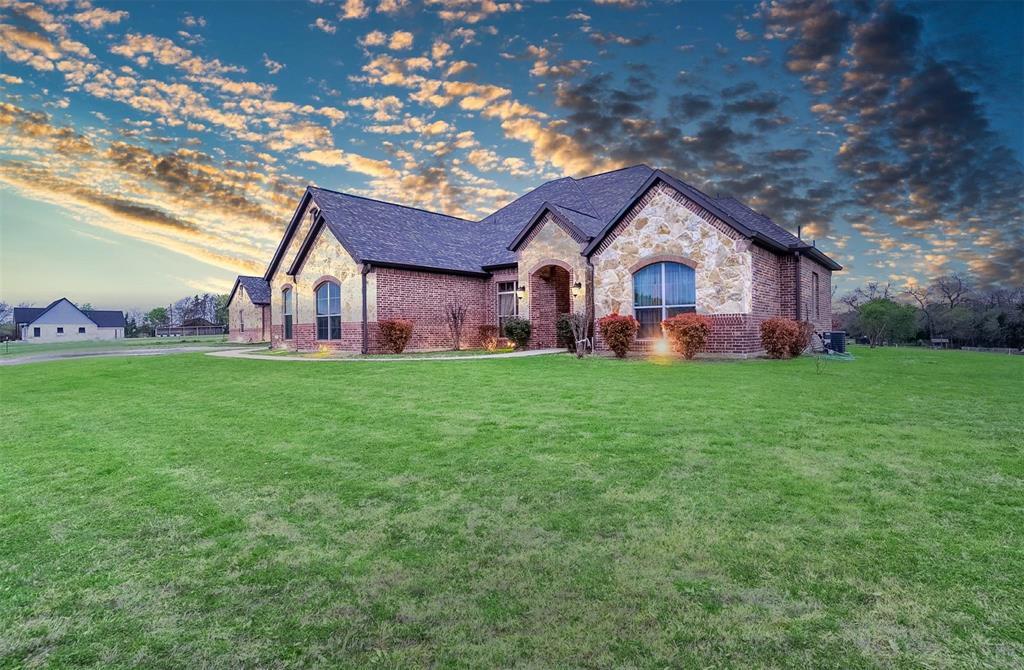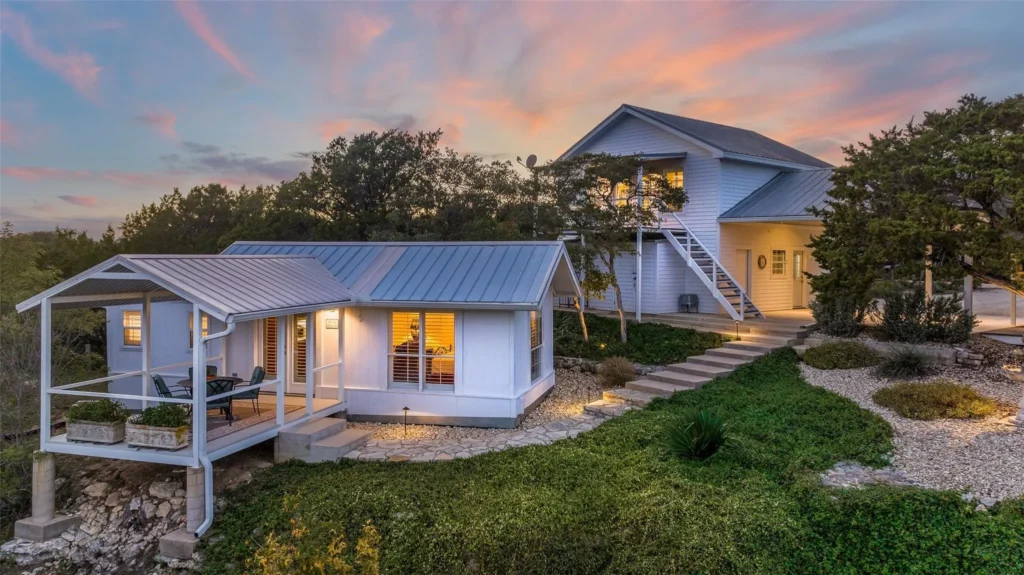Family compounds are gaining traction in recent years. A compound helps you keep your extended family close by.

This unique living option blends communal living with individual privacy. From their historical roots to modern-day benefits and key features, this article offers a detailed look at family compounds and why they may be the perfect choice for your family.

What Is a Family Compound?
Family compounds are typically large residential properties with multiple homes. Multiple generations of families or closely-knit groups can live in a communal space.
Key features include:
- Multiple living units
- Shared spaces
- Privacy
All compounds are different. However, most places include units for individual households. They also typically have communal spaces. This includes farms, gardens, kitchens, or even recreational areas.
The layout can vary depending on the needs of the family and the type of property that they start with. In some cases, people find a rural home and add to it or create one or two additional living units.
Despite offering close living arrangements, these compounds also provide privacy. Each household has private space within a separate living unit.
Quick History of Family Compounds
These residential properties aren’t new. Compounds have existed in various forms around the world for thousands of years.
This type of living situation places greater emphasis on the importance of extended family units. In ancient times, family compounds offered a practical solution for agricultural communities. People had a shared space for work and living.
During the 20th century, wealthy families brought the idea of compounds back into the mainstream. Large estates were often passed down and included space for multiple generations.
Some of the most famous examples of family compounds include sprawling estates owned by elite businessmen and politicians. The Kennedy, Getty, Vanderbilt, and Rockefeller families all had large luxurious properties with multiple dwellings.
However, in recent years, the idea of a family compound has caught traction among hardworking people seeking an alternative to traditional residential properties.

Benefits of a Family Compound
Family compounds offer many benefits, from saving money to providing support for older family members.
Here’s a closer look at some of the top reasons why people choose these types of properties over single-family homes:
Strengthened Family Bonds
Living close to family can help create stronger relationships. Daily interactions, shared meals, and joint activities enhance the bond.
A family compound also allows you to preserve and continue family traditions. You can easily organize celebrations, holidays, and rituals. These activities help bring everyone together.
Sharing Responsibilities
In a compound, everyone can contribute. You can distribute household chores and other duties among a larger group of people.
This can make life easier for everyone. Older adults can help with childcare, while younger family members can assist the elderly.
Money Savings
Sharing resources helps save money. You benefit from economies of scale. Communal facilities can reduce individual expenses.
Bulk buying supplies and shared costs for large projects lead to substantial savings. You’ll spend less on essential items.
Families can also provide financial support more easily. They can help with unexpected financial issues, such as medical expenses. This reduces the financial burden on each household.
Emotional and Social Benefits
Compounds provide a built-in support system. This goes beyond financial support. Family members can depend on each other for help with emergencies, childcare, and even emotional support.
The emotional security that comes with the compound can reduce feelings of isolation. A built-in support network is readily available. When needed, family members can share their joys and challenges, offer advice, and lend a sympathetic ear.
Flexibility and Adaptability
A family compound is a flexible and adaptable environment. As these compounds require plenty of space, you have room for future expansion. As your family dynamics evolve, spaces can be reconfigured to accommodate new family members.
You also have the freedom to make your living space unique. You still benefit from shared communal areas but can make your household match your lifestyle.
The size of a compound makes it more adaptable compared to a smaller lot. Adding or expanding is easier when your house sits on acres of land.
Sustainable Living
Shared amenities and eco-friendly practices help contribute to sustainable living. Family compounds can use gardens, recreational areas, and renewable energy systems.
Recycling programs, water conservation, and community gardens are easier to organize and more effective as a group. Use these sustainable practices on your compound to limit your environmental impact.
Boost to Quality of Life
Many of the benefits discussed contribute to a generally improved quality of life.
The benefits discussed can improve everyone’s quality of life. Compound living offers more socialization and support.
Multiple generations can live closely in a single compound. Grandparents, parents, and children live on the same lot. This arrangement enables elderly family members to receive care and share wisdom.
Informal childcare and elder care arrangements become easier. The level of support can have a profound effect on everyone’s happiness.
Build vs. Buy – Which Is Better?
Building a family compound allows you to customize the design. You can make choices to help it better fit your specific needs.
You get to pick the layout, materials, amenities, and more. However, it’s also time-consuming and may be more costly.
Buying an existing property is faster and potentially less expensive. Yet, it may also require renovations, which can add to the cost.
You may not find an existing lot that has enough homes on it. You’re more likely to find a large lot with the right acreage and one good home on it. You’ll then need to construct additional homes to accommodate more households.

How Much Does It Cost?
The cost of a family compound varies. The biggest factor is the size. It costs more to build a larger property or more structures.
The cost of a new home is $350,000 to $500,000. If your estate has several homes, the cost can be quite high.
In some cases, you’re simply adding to an existing home. You may create a communal kitchen or a new wing with extra bedrooms. Expanding the property to accommodate your extended family may cost less overall.
Choosing high-end materials adds to your total spending. Higher costs also come with complex designs, swimming pools, and other amenities.
The location is also important when estimating the price. You’ll often pay less in rural areas.
Understanding the Build Process for Family Compounds
Building a compound involves many steps, from developing a plan and buying land to constructing or renovating homes. Understanding the process can help with your planning…
Planning and Design
Design your housing units or update an existing property. You may want to hire architects or professional builders for this step. They can help create a layout that matches the needs of your family.
Some of the main details to consider during the design phase include:
- Purpose
- Your budget
- Location and land
- Zoning and regulations
- Layout and design
- Sustainability
- Future growth
- Landscaping
Define why you want to build a family compound. For example, you may need a permanent residence, vacation spot, or retirement home.
Set a realistic budget for the project. Account for land acquisition, construction, landscaping, and maintenance needs.
Find a location that fits your lifestyle. Try to find a spot that is near the places you visit frequently, such as work, school, or the grocery store.
Amenities are also important. You may prefer to live near shopping and entertainment centers.
Get input from the rest of your family. Make sure that the spot works well for others.
The property should also be zoned for multiple homes on one lot.
Layout Considerations
Design separate living areas or residences. Each family should have their own space.
You may also want shared amenities. Communal kitchens and dining areas are common. These shared areas are a big part of what makes a family compound so special.
Yet, it’s also essential to consider the future. Your family may eventually expand. This may involve adding more structures or renovating existing ones.
Your compound is likely to include plenty of outdoor space. Landscaping can help enhance the beauty and usability of the surrounding land. Consider adding gardens, play areas, and walking paths.
Securing Permits
You can’t construct a compound without permits. Permits give you permission to build or complete certain projects. This includes electrical work and constructing the home itself.
In many cases, the builder that you hire can assist with or handle obtaining permits.
Financing
Financing is likely needed unless you have enough assets to cover the costs. Construction loans are often used for renovations or new buildings.
With a construction loan, you get a portion of the balance to pay for each stage of construction. When the project is done, the loan is replaced with a mortgage.
While you may need a large loan, remember that multiple families may be involved in the transaction. You can combine your incomes, which boosts your purchasing power. This could help you qualify for a large loan.
Construction
Always use a reputable builder to ensure reliable construction. This phase includes site preparation, building the structures, installing utilities, and much more.
The timeframe and cost of construction vary significantly depending on the amount of work. If you’re expanding an existing property, you may not spend as much time or money compared to building multiple structures from the ground up.
Construction for a new home can take eight months or longer. With several homes, the process may take more than a year.
Plan where you’ll stay during construction. You typically need to stay off the property until the project is done.
Final Touches
After construction, the last details are completed. These include landscaping, interior design, and furnishing the living spaces.
Keep in mind that your compound will likely be a work in progress. After constructing the living areas, you can take your time adding amenities. You can gradually add more recreational facilities and other shared spaces – or even more homes for additional families.

Downsides of a Family Compound
While compound living offers many benefits, it also has potential drawbacks. This includes the risk of conflict, privacy concerns, and maintenance demands.
The chances of conflicts between family members can grow when living so close. Differences in lifestyles, parenting styles, and financial disagreements may create tension.
These issues can also get in the way of privacy. While each household has a separate living unit, they may feel that the closeness of family members is intrusive, leading to a lack of a sense of privacy.
A large compound is also likely to have more maintenance requirements. The costs can be spread among families, but managing and maintaining a large property still involves more work.
Tips for a Successful Family Compound
Taking the time to develop a plan helps you avoid the potential downsides discussed. To make sure that everyone lives in harmony, use the following suggestions:
Clear Communication
Talk about expectations and responsibilities with your family. Consider holding family meetings.
A meeting can help you and your family address issues quickly. They also help keep everyone informed, preventing confusion about future plans.
Defined Boundaries
Establish boundaries when it comes to privacy and shared spaces. Discuss how you want to handle visiting each other’s households. You want to promote communal activities while respecting each other’s privacy.
Professional Management
Hiring a property manager can simplify some of the aspects of owning a large family compound. They can handle maintenance, landscaping, and other tasks.
Paying someone to manage your property simplifies things. You should find it easier to peacefully cohabitate.
Effective Financial Planning
You need a detailed financial plan when setting up a family compound. Create a detailed plan to manage shared expenses and investments. Transparency can help prevent disputes.
Conclusion
Family compounds are unique but offer several benefits. Families can share resources and responsibilities while getting to spend more time together. This strengthens bonds and creates a sense of community.
However, it also requires planning.
If you decide to start a compound, make sure that you carefully discuss the details with your family. Clear communication and boundaries can save you from hassles later on.


